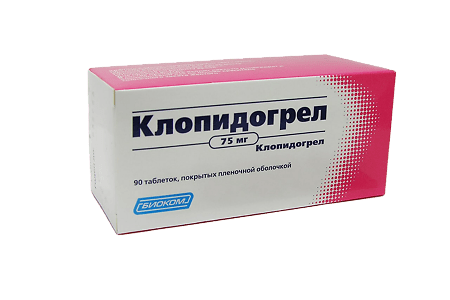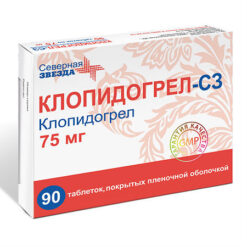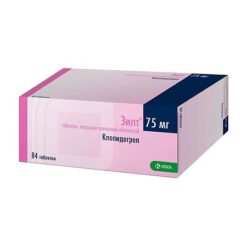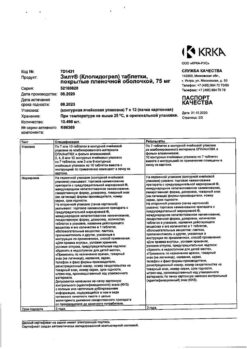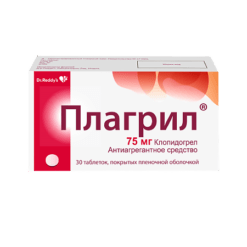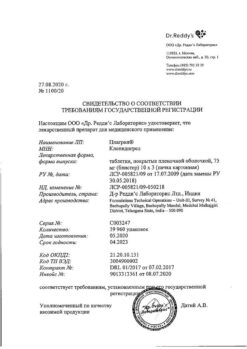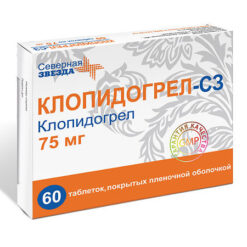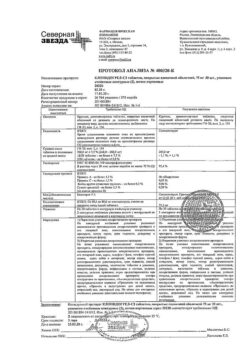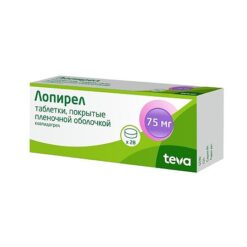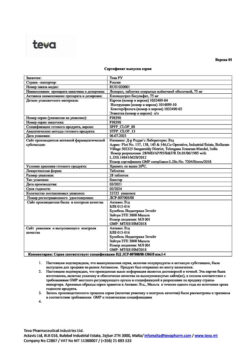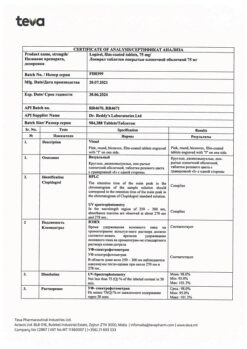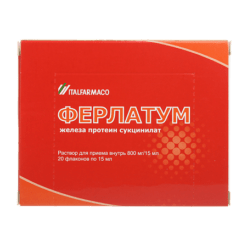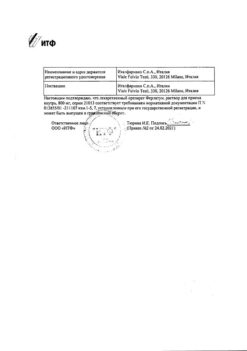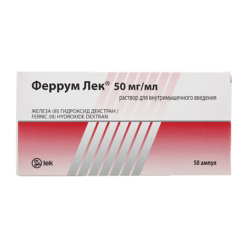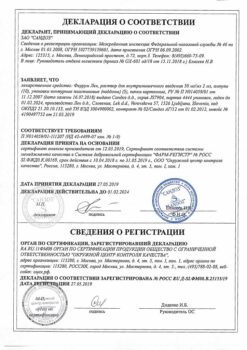No products in the cart.
Clopidogrel, 75 mg 90 pcs
€37.30 €31.08
Out of stock
(E-mail when Stock is available)
Description
Pharmacotherapeutic group
Antiplatelet drug
ATC code
B01AC04
Pharmacodynamics:
Clopidogrel is a specific and active inhibitor of platelet aggregation. Selectively reduces adenosine diphosphate (ADP) binding to receptors on platelets and glycoprotein IIb/IIIa receptor activation under the action of ADP weakening platelet aggregation.
Creases platelet aggregation caused by other agonists by preventing their activation by released ADP without affecting phosphodiesterase (PDE) activity. It binds irreversibly to platelet ADP receptors, which remain immune to ADP stimulation during the life cycle (about 7 days).
Inhibition of platelet aggregation is observed 2 hours after administration (40% inhibition) of the initial dose of 400 mg. The maximum effect (60% inhibition of aggregation) develops after 4-7 days of continuous use at a dose of 50-100 mg/day. The antiaggregant effect lasts for the whole period of platelet life (7-10 days).
In the presence of atherosclerotic vascular lesions it prevents the development of atherothrombosis regardless of the localization of the vascular process (cerebrovascular cardiovascular or peripheral lesions).
Pharmacokinetics:
Clopidogrel is rapidly absorbed after repeated administration of 75 mg daily.
The bioavailability is high. However, the plasma concentration of the starting substance is low and does not reach the limit of measurement (0025 mcg/L) already 2 hours after the administration. The binding to plasma proteins is 98-94%.
Clopidogrel is rapidly metabolized in the liver. Active metabolite is inactive carboxylic acid derivative with maximum concentration time (TCmax) which is reached after 1 hour after repeated oral doses of 75 mg (mean maximum cmax concentration is approximately 3 mg/l).
About 50% of the drug is excreted by the kidneys and approximately 46% by the intestine within 120 hours after administration. The elimination half-life (T1/2) of the main metabolite after single and repeated administration is 8 hours. Concentrations of metabolites excreted by the kidneys are 50%.
Indications
Indications
Prevention of thrombotic complications in patients with myocardial infarction ischemic stroke or peripheral artery occlusion.
In combination with acetylsalicylic acid to prevent thrombotic complications in acute coronary syndrome:
– with ST-segment elevation when thrombolytic therapy is possible;
– without ST-segment elevation (unstable angina or myocardial infarction without Q-wave) including in patients undergoing stenting.
Active ingredient
Active ingredient
Composition
Composition
Auxiliary film ingredients: Opadray II Pink – 0.0097 g (polyvinyl alcohol, titanium dioxide, talc, macrogol (polyethylene glycol), carmine red dye (E120), aluminum varnish based on sunset yellow dye (E110), aluminum varnish based on red charming dye (E129), aluminum varnish based on quinoline yellow dye (E104)), silicone emulsion – 0.0003 g.
How to take, the dosage
How to take, the dosage
Ingestion regardless of meals.
For prevention of thrombotic complications in patients with myocardial infarction ischemic stroke or peripheral artery occlusion – 75 mg once daily.
In patients with myocardial infarction, treatment can be started from the first day to the 35th day after myocardial infarction and in patients with ischemic stroke – within 7 days to 6 months after ischemic stroke.
To prevent thrombotic complications in acute coronary syndrome without ST-segment elevation (unstable angina pectoris without Q-wave): start with a single loading dose of 300 mg and then take 75 mg/day (in combination with ASA at a dose of 75-325 mg/day the recommended dose is 100 mg/day). Maximum favorable effect occurs after 3 months. The course of therapy is up to 1 year.
For prevention of thrombotic complications in acute ST-segment elevation coronary syndrome (acute ST-segment elevation myocardial infarction), 75 mg/day with initial single-dose loading in combination with ASA and thrombolytics (or without thrombolytics).
Combination therapy is started as soon as possible after the onset of symptoms and continued for at least 4 weeks. In patients older than 75 years, treatment with clopidogrel should be started without a loading dose.
In patients with genetically determined decreased CYP2C19 isoenzyme function, the effect of clopidogrel may be reduced. The optimal dosing regimen in these patients has not been established.
The experience of use in patients with CKD or moderate hepatic impairment is limited.
Interaction
Interaction
The concomitant administration of warfarin with clopidogrel may increase the intensity of bleeding, so this combination is not recommended.
The administration of glycoprotein IIb/IIIa inhibitors ASC heparin together with clopidogrel increases the risk of bleeding.
Concomitant use with NSAIDs may increase the risk of bleeding.
Simultaneous use with CYP2C19 inhibitors (e.g., omeprazole) is not recommended.
The active metabolite of clopidogrel inhibits the activity of CYP2C9 isoenzyme, which may increase plasma concentrations of phenytoin tolbutamide and NSAIDs.
Special Instructions
Special Instructions
During treatment it is necessary to monitor the parameters of the hemostatic system (activated partial thromboplastin time (APTB) platelet count platelet function tests) regularly to study the functional activity of the liver.
Clopidogrel should be used with caution in patients at risk of significant bleeding during trauma surgery, patients with bleeding-prone injuries (especially gastrointestinal and intraocular) and patients receiving ASA nonsteroidal anti-inflammatory drugs (including COX-2 inhibitors) heparin or glycoprotein IIb/IIIa inhibitors. Patients should be closely monitored for any signs of bleeding, including hidden bleeding especially during the first weeks of using the drug and/or after invasive cardiac procedures or surgery. Simultaneous use of clopidogrel and warfarin is not recommended because it may increase bleeding;
In case of surgical interventions if antiaggregant effect is undesirable, the course of treatment should be discontinued 7 days before surgery.
Patients should be warned that because it takes longer to stop bleeding when using clopidogrel (with or without ASA), they should inform their physician of each bleeding event. Patients should also inform their physician about taking the drug if they are going to have surgical interventions.
After taking clopidogrel, thrombotic thrombocytopenic purpura (TTP) has been found very rarely sometimes after short-term use. This condition is characterized by thrombocytopenia and microangiopathic hemolytic anemia combined with neurologic signs of impaired renal function or fever. TTP is a potentially fatal condition requiring immediate treatment, including the use of plasmapheresis.
In the absence of data, clopidogrel should not be recommended for acute (less than 7 days) ischemic stroke.
The experience of using clopidogrel in patients with impaired renal function is limited so clopidogrel should be prescribed with caution in these patients.
In severe hepatic impairment, be aware of the risk of hemorrhagic diathesis experience with the drug in patients with moderate hepatic impairment is limited, so clopidogrel should be prescribed with caution in these patients. Influence on the ability to drive motor vehicle:
Clopidogrel may cause adverse effects on the nervous system (headache dizziness systemic dizziness confusion hallucinations which may affect the ability to drive vehicles and to engage in other potentially dangerous activities requiring increased concentration and rapid psychomotor reactions.
Contraindications
Contraindications
Hypersensitivity to the active or any excipient of the drug.
Lactase deficiency lactose intolerance glucosogalactose malabsorption.
Age under 18 years (effectiveness and safety of use have not been established).
Severe hepatic impairment.
Active pathological bleeding (peptic ulcer or intracranial hemorrhage).
Pregnancy and lactation.
Moderate hepatic insufficiency.
Chronic hepatic insufficiency (CHF).
Pathological conditions that increase the risk of bleeding (including trauma surgery).
The concomitant use of ASA warfarin nonsteroidal anti-inflammatory drugs (NSAIDs) (including COX-2 inhibitors) heparin glycoprotein IIb/IIIa inhibitors.
Hereditary impairment of CYP2C19 isoenzyme function.
Side effects
Side effects
Bleeding is the most common reaction that occurs during the first month of taking the drug. Cases of severe bleeding have been reported in patients taking clopidogrel concomitantly with ASA or clopidogrel with ASA and heparin (see section “Cautions”).
The frequency of adverse effects is defined according to the following definitions: very common – more than 1/10 common – more than 1/100 and less than 1/10 infrequent – more than 1/1000 and less than 1/100 rare – more than 1/10000 and less than 1/1000 very rare – less than 1/10000 including isolated cases.
Within each frequency class, adverse effects are presented in decreasing order of severity.
Hematopoietic organs: infrequent – thrombocytopenia leukopenia eosinophilia; rare – neutropenia including pronounced; very rare – thrombotic thrombocytopenic purpura anemia including aplastic pancytopenia agranulocytosis severe thrombocytopenia granulocytopenia.
Allergic reactions: very rare – anaphylactic reactions serum sickness.
Nervous system disorders: infrequent – headache dizziness paresthesia intracranial hemorrhage including fatal; very rare – mental confusion hallucinations disorders of taste.
Sensory system disorders: infrequent conjunctival hemorrhage and retinal hemorrhage; rarely – vertigo.
The cardiovascular system: frequent – hematoma; very rare – severe bleeding bleeding from the operating wound vasculitis BP decrease.
Respiratory system: very common – nasal bleeding; very rare – bronchospasm interstitial pneumonitis pulmonary bleeding hemoptysis.
The digestive system: frequently – diarrhea abdominal pain dyspepsia gastrointestinal bleeding; infrequently – gastric and 12 duodenal ulcer gastritis vomiting nausea constipation flatulence; rarely – retroperitoneal bleeding; very rarely – pancreatitis colitis including ulcerative or lymphatic colitis.including ulcerative or lymphocytic stomatitis acute liver failure hepatitis impaired liver function tests gastrointestinal bleeding with lethal outcome.
Skin disorders: common – subcutaneous haemorrhage; infrequent – skin rash, purpura; very rare – angioedema urticaria erythematous rash erythema multiforme erythema Stevens-Johnson syndrome toxic epidermal necrolysis eczema red lichen.
Musculoskeletal system: very rarely – haemarthrosis arthritis arthralgia myalgia.
Urogenital system disorders: infrequent hematuria; very rare – glomerulonephritis hypercreatininemia.
Laboratory indices: infrequent – prolongation of bleeding time.
Other: very rare: arthralgia arthritis myalgia anaphylactoid reactions serum sickness temperature increase liver function test disorders increase blood creatinine concentration glomerulonephritis fever hemarthrosis hematuria.
Overdose
Overdose
Clopidogrel overdose may lead to prolonged bleeding time and subsequent complications. If bleeding is detected, appropriate treatment should be administered.
No antidotes have been found for the pharmaceutical activity of clopidogrel.
If rapid correction of prolonged bleeding time is necessary, platelet transfusion is recommended.
Pregnancy use
Pregnancy use
Similarities
Similarities
Additional information
| Shelf life | 3 years. Do not use after the expiration date. |
|---|---|
| Conditions of storage | In a dry place protected from light at a temperature not exceeding 25 ° C. Contain out of reach of children. |
| Manufacturer | Biocom AO, Russia |
| Medication form | pills |
| Brand | Biocom AO |
Other forms…
Related products
Buy Clopidogrel, 75 mg 90 pcs with delivery to USA, UK, Europe and over 120 other countries.

